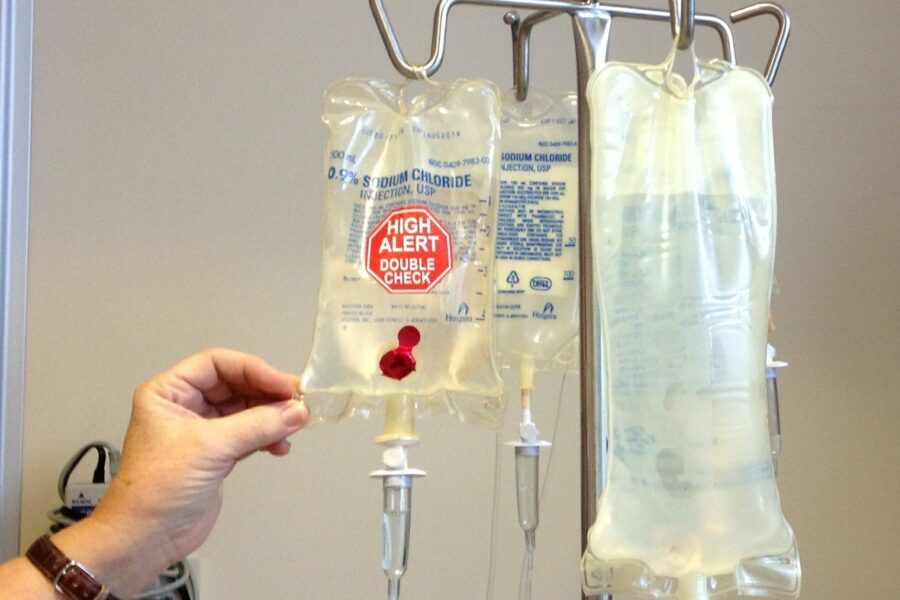 The following is a clinical review written by Corey Paz, PharmD. Recent graduate of UNMC College of Pharmacy and new PGY1 Pharmacy Resident at Gunderson Health System in LaCrosse, Wisconsin. Follow him on Twitter @coreypaz.
The following is a clinical review written by Corey Paz, PharmD. Recent graduate of UNMC College of Pharmacy and new PGY1 Pharmacy Resident at Gunderson Health System in LaCrosse, Wisconsin. Follow him on Twitter @coreypaz.
Corey was supervised by Scott Bergman, PharmD, FCCP, FIDSA, BCPS. Pharmacy Coordinator for Antimicrobial Stewardship at Nebraska Medicine and Clinical Associate Professor in the UNMC Dept of Pharmacy Practice and Science. Follow him on Twitter @bergmanscott.
Cefazolin is a first-generation cephalosporin (ß-lactam antibiotic) used for the treatment of Gram-positive bacterial infections and some Gram-negative organisms. It has potent activity against common Gram-positive bacteria including Staphylococcus aureus (methicillin-susceptible only, MIC90 = 2 mcg/mL)1 and beta-hemolytic Streptococci such as Streptococcus pyogenes (Group A) and Streptococcus agalactiae (Group B). The volume of distribution of cefazolin is ~10 L, and it is 75-85% plasma bound. In comparison to four other first-generation cephalosporins (cephaloridine, cephalothin, cephalexin, cephanone), cefazolin has the smallest apparent volume of distribution which in part explains its high levels in the blood and popularity over the others2. The reported half-life of the drug in adults is 1.8 h (IV).
Based on its pharmacodynamic profile, cefazolin needs to be administered at least twice per day by IV bolus to achieve therapeutic concentrations for the most susceptible organisms1. In patients with severe infection, the usual dosage range is 1 to 2 g IV every 8 h in patients when renal function is normal2. Cefazolin is a preferred agent for patients being discharged from the hospital that require IV antibiotics due to its efficacy and safety.3,4 One option to avoid frequent re-dosing is to administer cefazolin as a constant infusion over 24 h.5
Due to time-dependent pharmacodynamics, the efficacy of cephalosporins is associated with time above the minimum inhibitory concentration (T>MIC)1. The optimal bactericidal action of cephalosporins reportedly occurs at approximately four times the MIC for the infecting pathogen6. Increasing the dose (>MIC) of a ß-lactam antibiotic does not improve bactericidal activity, but rather increases the risk of adverse effects. Strategies utilized to maximize the efficacy of ß-lactams include (1) decreasing the dosing interval (2) extending the infusion time of the drug and (3) administering the drug as a continuous infusion following a loading dose.
Livingston & Wang (1992) first demonstrated the superiority of continuous infusion dose administration for cefazolin versus standard intermittent dose administration using rats. The study explored identical quantities of cefazolin administered either intermittently or continuously after shock in a subcutaneous abscess model with 2×108 S. aureus. Rats were divided into three groups: (1) controls, which received no drug treatment; (2) rats intermittently dosed at either 30 or 60 mg/kg intraperitoneally every 8 h for three doses daily, and (3) rats receiving continuous drug infusion consisting of 30 or 60 mg/kg intraperitoneally as a loading dose followed by 90 or 180 mg/kg continuously infused over a 24 h time period (Figure 1).
Administration of cefazolin as a loading dose (30 mg/kg) followed by a continuous infusion (90 mg/kg over 24 hours) resulted in significantly more drug being present in the tissue than the identical quantity of cefazolin given as intermittent bolus doses.6 Seven days after inoculation, abscess number, diameter, and weight were measured. Within the continuous infusion group, a standard quantity of cefazolin (120 mg/kg/day) significantly decreased the number and size of the abscess compared with intermittent dosing after hemorrhagic shock.
In a retrospective cohort study, Zeller et al. (2008) investigated the use of continuous intravenous cefazolin in patients who were discharged home with parenteral antibiotic therapy on an outpatient basis. At home, antibiotic therapy was administered twice a day, over a 12 h period, by a visiting nurse through a portable infusion device, either a constant-infusion pump or an elastomeric infusion system (single-use). Patients unable to discharge home were transferred to a rehabilitation center or remained inpatient until the end of parenteral therapy. Drug therapy was initiated with a loading dose, infused over 10 minutes, of 1 g when the daily dose was ≤4 g or of 2 g when the daily dose was >4 g, followed immediately by the continuous infusion of 60 to 80 mg/kg of body weight. For example, the dosing regimen of 70 kg individual would be as follows: 2 g of cefazolin infused over 10 minutes followed by 4200 mg (60 mg/kg * 70 kg) total daily dose divided twice a day (2100 mg/dose over 12 hours each). The median treatment duration was 42 days, and the median daily cefazolin dose was 6 g. The median follow-up time was 25 months. Overall, 82 (93%) of the 88 patients were considered to have been cured (53 patients) or probably cured (29 patients)7.
In summary, cefazolin is a first-generation cephalosporin with bactericidal activity against methicillin-susceptible Gram-positive organisms and some Gram-negative organisms. Two separate studies provided evidence favoring the administration of a continuous infusion of cefazolin following a loading dose compared to intermittent administration. The emphasis for clinical application not only stems from the results of each study, but also from the pharmacodynamic profile of cefazolin. The time-dependent efficacy plays an instrumental role in the flexibility of drug administration. Doses ranging from 60 mg/kg/day to 120 mg/kg/day have demonstrated efficacy and fall within the suggested 12 g/day maximum dose whether administered over two 12 h intervals or one 24 h interval.
With appropriate clinical judgement, monitoring, and follow-up, administration of cefazolin (6g/d) by continuous infusion targeting susceptible pathogens may be considered in specific clinical scenarios.
References
- Howard, G., Begg, E., Chambers, S., Brincat, J., Zhang, M., & Kirkpatrick, C. (2002). Free and total cefazolin plasma and interstitial fluid concentrations at steady state during continuous infusion. Journal of Antimicrobial Chemotherapy, 50, 429-432.
- Kirby, W., Regamey, C. (1973). Pharmacokinetics of Cefazolin Compared with Four Other Cephalosporins. The Journal of Infectious Diseases, 128, S341-S346.
- Youngster, I., Shenoy, E., Hooper D., and Nelson S. (2014) Comparative evaluation of the tolerability of cefazolin and nafcillin for the treatment of methicillin-susceptible Staphylococcus aureus infections in the outpatient setting. Clinical Infectious Diseases, 50, 369-375.
- Lee, B., Tam I., Weigel IV, B., Beeze, J., Paulus J., Nelson, J., Allison, G. (2015) Comparative outcomes of β-lactam antibiotics in outpatient parenteral antibiotic therapy: treatment success, readmissions and antibiotic switches. Journal of Antimicrobial Chemotherapy, 70, 2389-2396.
- Harris, A., Shrestha, N., Allison. G., Keller, S., Bhavan, K., Zurlo, J., et al. (2019) 2018 IDSA Clinical Practice Guideline for the management of outpatient parenteral therapy. Clinical Infectious Diseases, 68, e1-e35.
- Livingston, D., Wang, M. (1992). Continuous Infusion of Cefazolin Is Superior to Intermittent Dosing in Decreasing Infection After Hemorrhagic Shock. The American Journal of Surgery, 165, 203-207.
- Zeller, V., Durand, F., Kitzis, M., Lhotellier, L., Ziza, J., Mamoudy, P., & Desplaces, N. (2008). Continuous Cefazolin Infusion To Treat Bone and Joint Infections: Clinical Efficacy, Feasibility, Safety, and Serum and Bone Concentrations. Antimicrobial Agents and Chemotherapy, 883-887.
